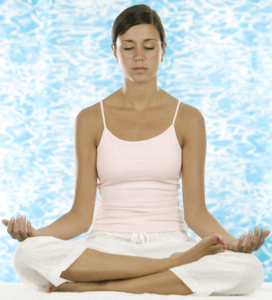
Heel Raises- Lifting and lowering the heels is a strength-training exercise even the youngest children can do. It also helps with balance.
- Stand facing your child.
- Hold hands.
- Slowly lift and lower your heels, encouraging your child to do the same thing at the same time.
Also:
- Pause each time you rise onto tiptoe, counting aloud to five.
- Instead of just raising your heels, you and your child can jump (two feet) or hop (one foot) lightly in place.
- Try all of these activities both slowly and quickly.
Beanbag Balance
When it comes to balancing activities, this
is an all-time favorite for children.
- Place a beanbag or a small, soft toy on your child’s head.
- Invite her to walk from one point in the room to another without dropping the beanbag.
- If she has to, she can hold on to it at first.

Also:
- Ask her to balance the beanbag as she walks both slowly and quickly, in different directions (forward, backward, or sideward), and in different pathways (straight, curving, and zigzagging).
- Invite her to try balancing the beanbag on other body parts, like a hand, shoulder, or elbow.
- Jump the River- Jumping uses the child’s own weight to build strength. If you do this for long periods of time, it can be good for the heart.
- Lay a jump rope in a straight line on the floor – or draw a line on the ground with chalk.
Ask your child to pretend the line is a river. - Challenge him to jump from one side of the river to the other.
Also:
- Be sure your child is landing with knees bent and heels coming all the way down to the floor.
- When he’s ready, you can “widen the river” by using two ropes, side by side, or a towel.
Mirror Game- This cooperative game is great for social/emotional development. And it means children have to do with their bodies what their eyes are seeing. This will help later with writing, among other things.
- Talk to your child about looking in the mirror.
- Stand facing your child, explaining that you want her to do exacdy as you do – just like she were your reflection in the mirror.
- Begin making slow movements that you can do in place, like raising and lowering an arm, nodding your head, or clapping hands. Take turns being leader.
Also:
- To help your child be more flexible, do things like bending and straightening at the waist, stretching arms overhead, or slowly reaching for your toes (keeping knees slightly bent).
- To help with muscle strength, lift and lower the heels or do deep knee bends.
- To help with heart health, jog or jump in place, stopping occasionally to rest.
More Ideas for Preschoolers:
- Bridges & Tunnels: Forming different kinds of bridges and tunnels with the body or body parts can help with both flexibility and muscle strength.
- The Track Meet: Invite your child to pretend she’s in a track meet at the Olympics. Can she pretend to jump hurdles, in addition to “running the track? “
- “Simon Says”: Play this excellent body-parts identification game without any elimination! To include fitness factors, have “Simon” issue challenges to jog or tiptoe in place, bend and stretch, or bend and straighten knees.
- Statues: To get your child moving, put on a piece of up-tempo music and invite him to move while the music is playing and to freeze into a statue when you pause it.























